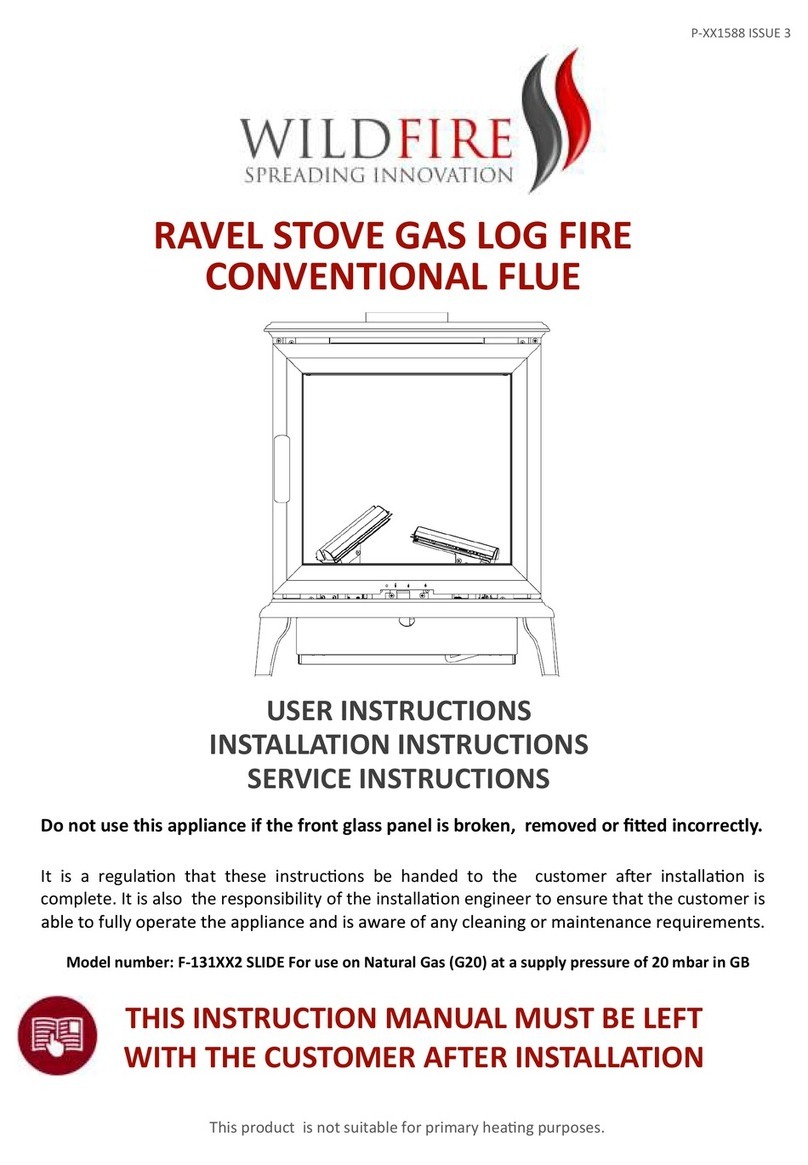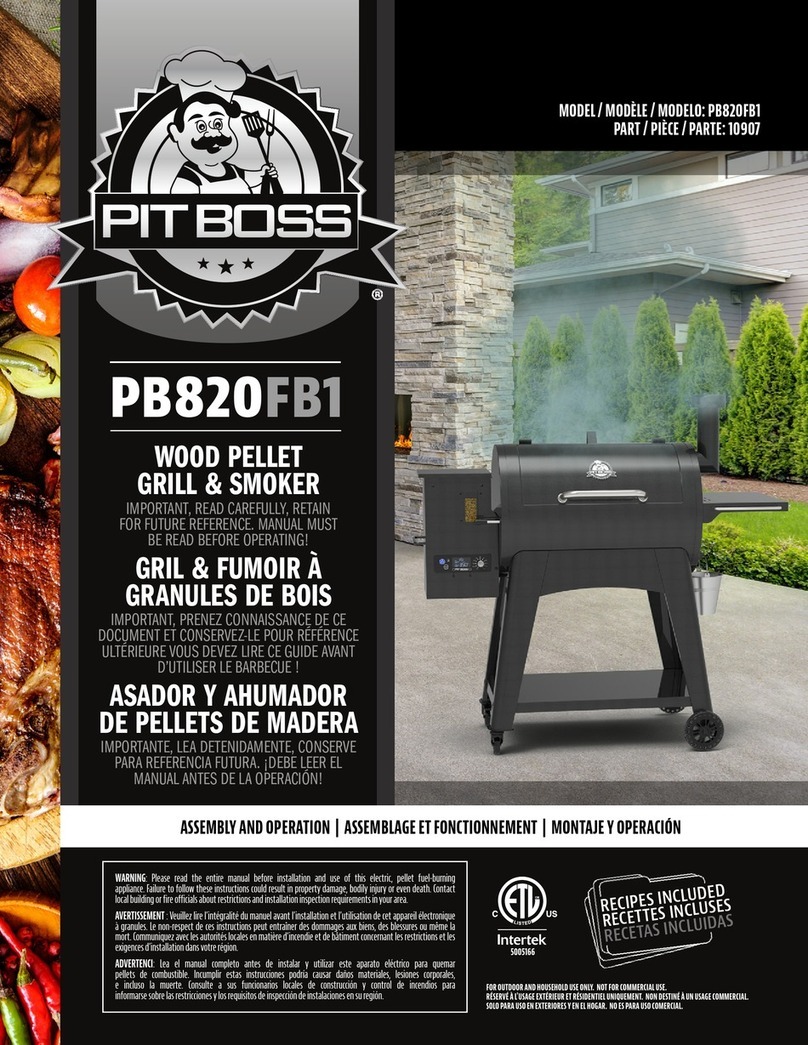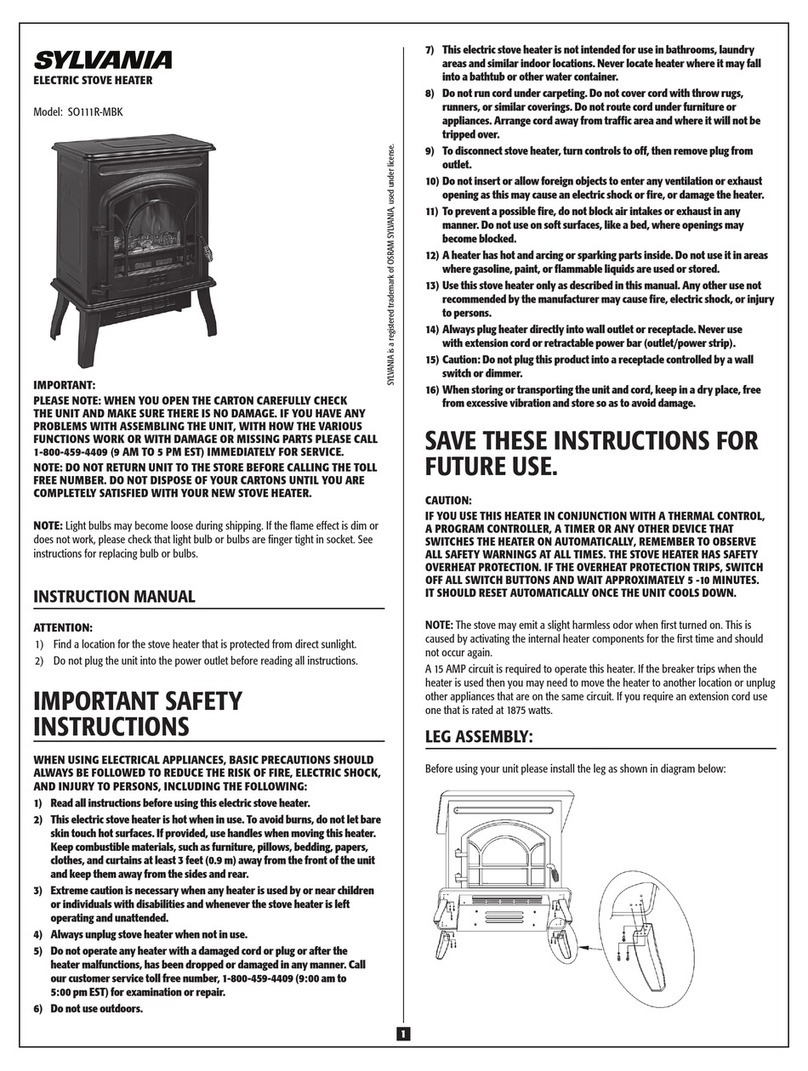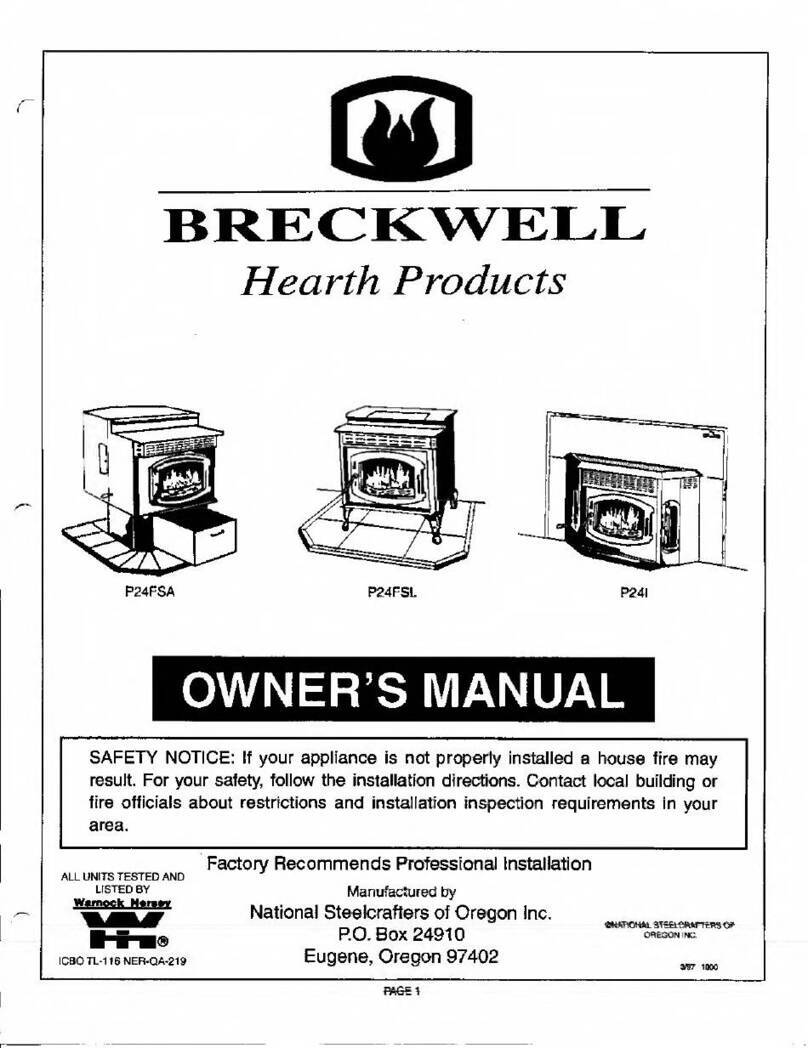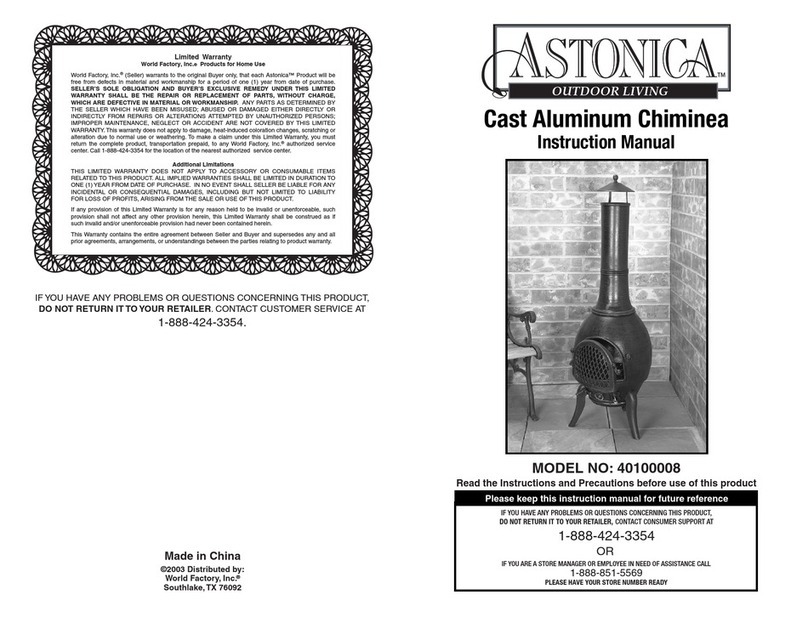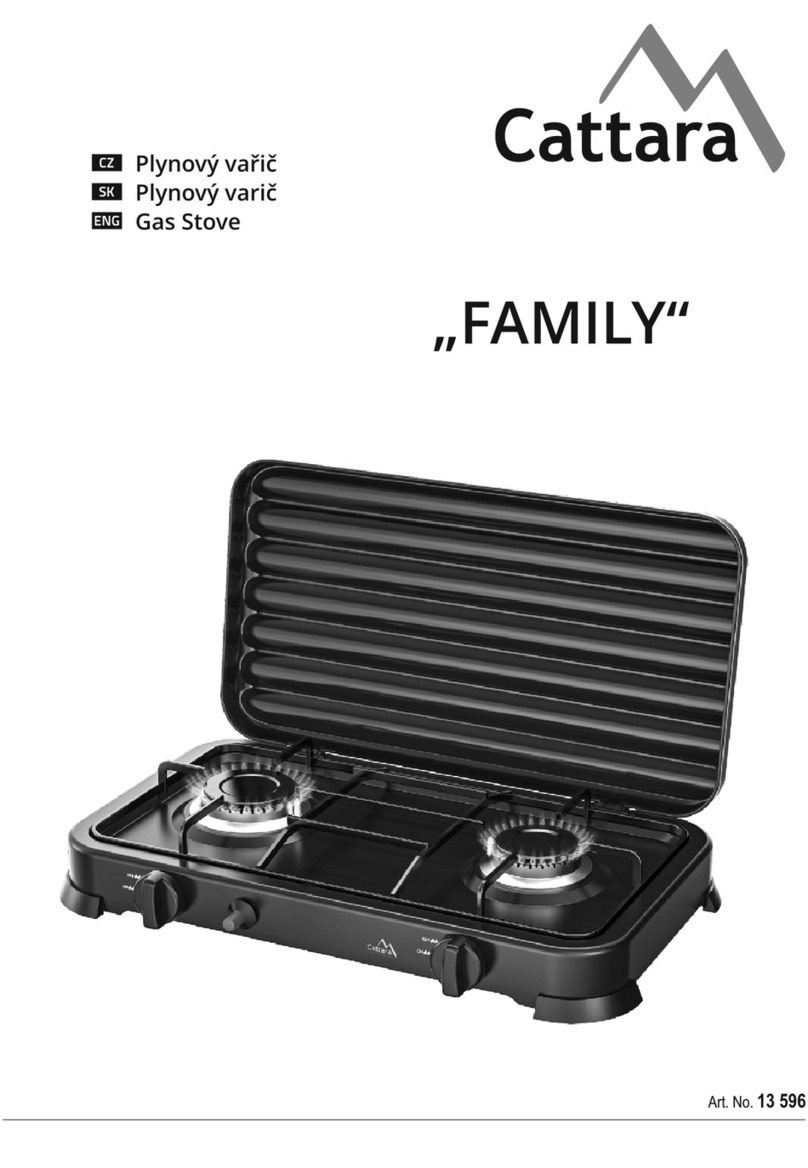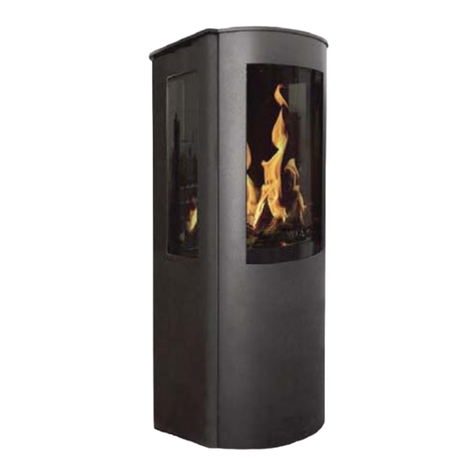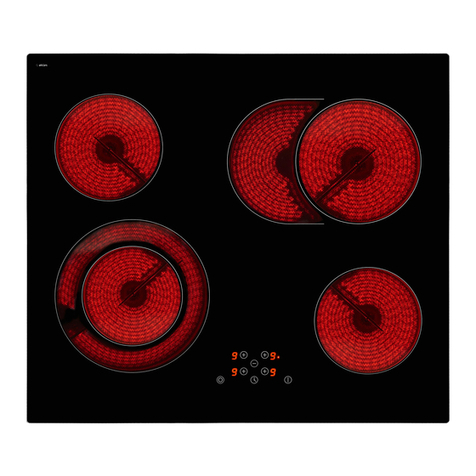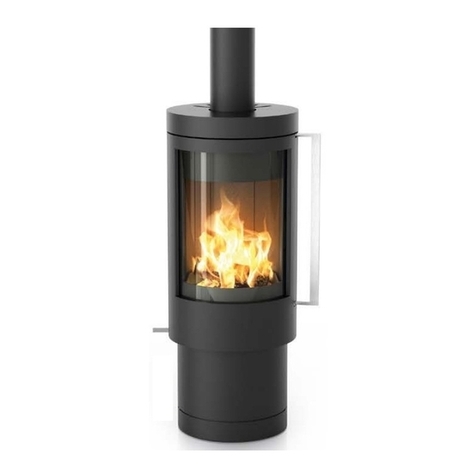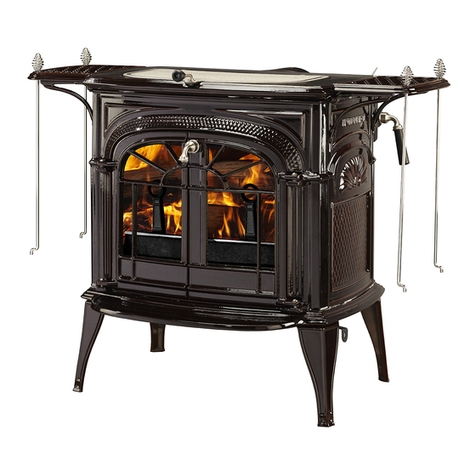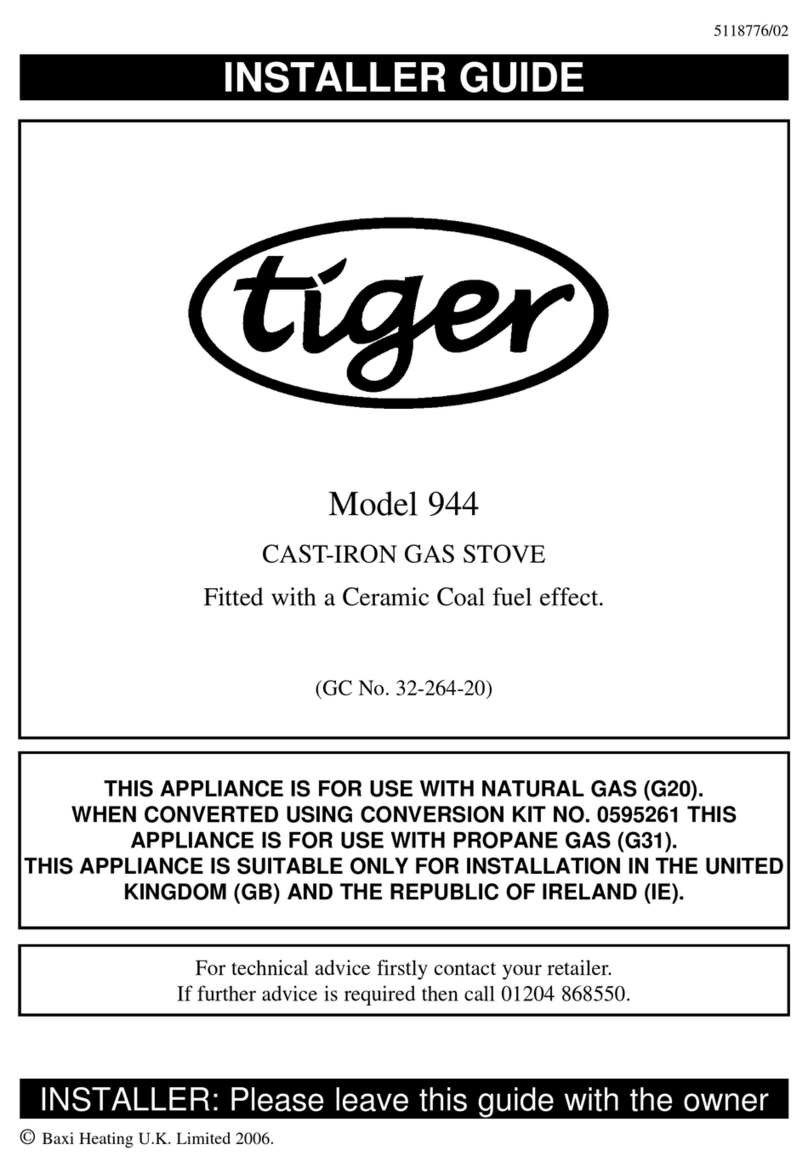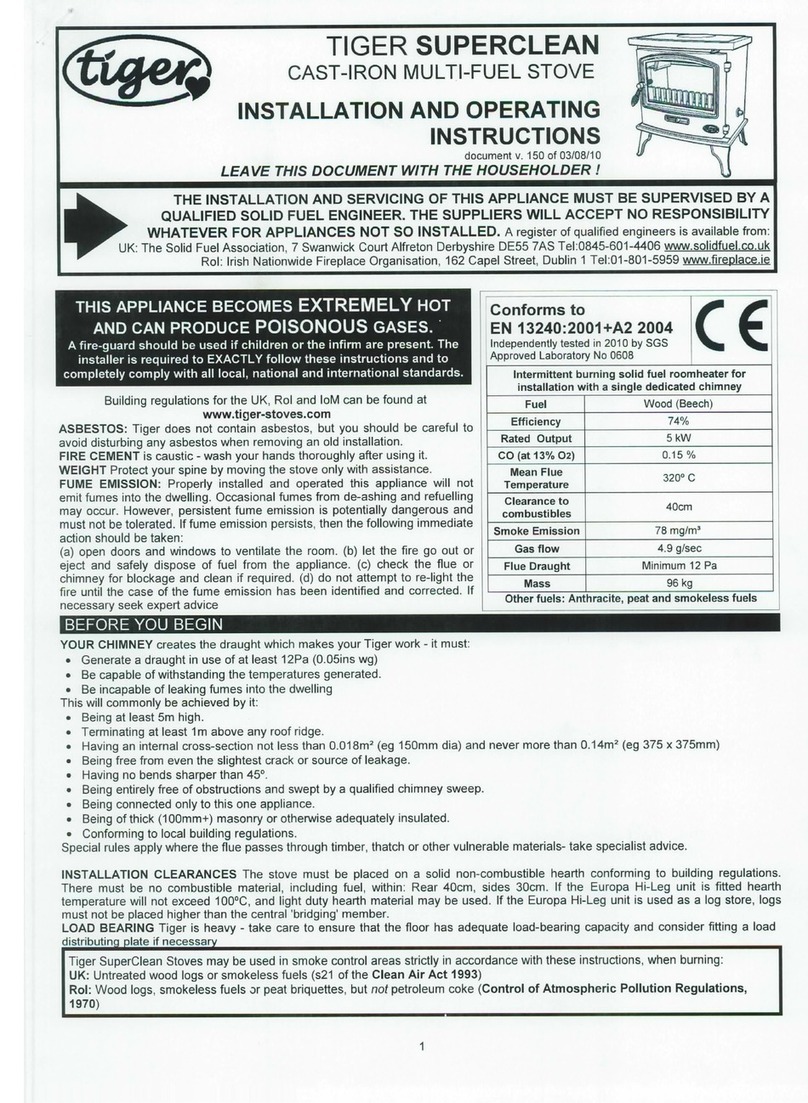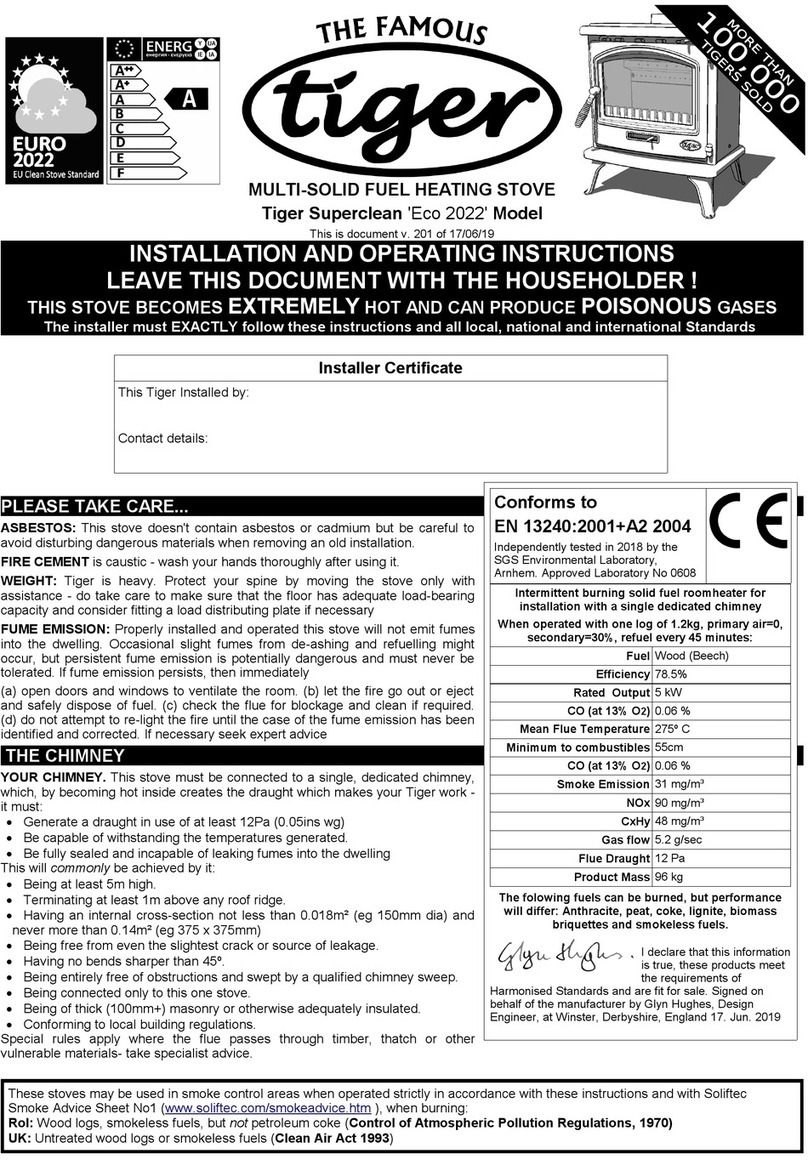EMPTYING ASHES Operate the de-ashing mechanism by
ocating the operating too onto the boss on the right-hand
side of the stove and moving it backwards and forwards a
few times. Use the too to open the door and ift out the
ashpan. Remember to et ash coo before disposing in
p astic sacks or dustbins. There is no need to empty every
ast speck, but ash shou d never be a owed to bui d up so
that it comes into contact with the underside of the grate.
EXTENDED BURNING A ow the fire to burn down to a
ow, hot firebed. Set the air contro to ' ow', empty the ash
and fu y fi with hard fue such as anthracite (sma er sizes
are to be preferred).
CLEANING Wipe the stove body with a s ight y damp c oth
when it is coo , don't use abrasives, meta po ish or 'cream'
c eansers as they can scratch the surface. Po ished parts
can be brightened using wire woo . Operating the stove for
a few minutes at high output wi usua y burn-off any
window deposits eft by tarry or wet fue s. Severe stains
can be removed with a proprietary c eaner avai ab e from
stove shops. After a period of use tiny hair ine cracks may
appear on the window, this is not a fau t and wi not
increase the risk of breakage but is a characteristic of the
toughest and most heat-resistant materia current y
avai ab e.
OPENING THE DOOR Tiger is designed to be operated
on y with the door c osed. Open the door s ow y when
refue ing or de-ashing to minimise fume emission into the
room
FUELS
In certain areas you are required by aw to burn smoke ess
fue s. Different fue s have very different burning
characteristics - we strong y recommend that you try a
se ection of fue s (or mixtures) to find which suits you best.
WOOD (Not smoke ess) When wood is cut down its ce s
are fu of water. Burning such wet or 'green' wood wastes
heat in making steam and produces f ammab e, acidic tars
which wi c ing to, and can damage, your stove and
chimney. Logs shou d be dried for at east a year (outside
under a tarpau in wi do). When dry enough to burn, the
ends wi sp it. The fine, white residue produced when
wood burns is not ash, but the remains of ce wa s which
can burn if kept hot enough, so don't de-ash the fire unti
abso ute y necessary.
HOUSECOAL (or BITUMINOUS COAL) (Not smoke ess)
Is raw, natura coa . Inexpensive, easy to ight and ow in
ash, it burns with great heat and an attractive f ame.
However, it makes ots of tarry smoke which wi tend to
stain the window and arge vo umes of f ammab e gas
which sometimes make it difficu t to contro .
COKE (Smoke ess) Is natura coa from which the smoke
has been removed (the smoke is disti ed to make aspirin,
creosote, ink and a sorts of usefu things).
ANTHRACITE and WELSH DRY STEAM COAL
(Smoke ess) Are natura hard, shiny forms of coa . Though
difficu t to ight, they burn with great heat and ast a ong
time. Choose the 'sma nuts' size.
PEAT (Lega y smoke ess in certain areas) Is semi-
decomposed woody materia found natura y. The near y
b ack moor and or bog peat shou d be dried and treated as
for wood.
LIGNITE (Not smoke ess) Is a natura minera , between
peat and coa . It ights easi y and burns we , though some
varieties produce excessive ash
BRIQUETTES Are compressed b ocks of fue , genera y
ab e to burn for ong periods and remarkab e for their
consistency. 'Homefire' and 'Phurnacite' are smoke ess
types whi e other brands are made from ignite, peat or
housecoa .
PETROLEUM COKE So d as 'Petcoke', 'Longbeach' and
under various proprietary names, is made from oi waste.
Easy to ight and to contro , its exceptiona heat and ack of
protective ash mean that it MUST NOT be used un ess
mixed with another fue . Grate and firebar ife wi be
drastica y reduced when using petro eum coke
HOUSEHOLD WASTES Some p astics give off toxic
fumes when burned and remember that batteries and
aeroso s exp ode! Tiger is not an incinerator, so on y ever
use the recommended fue s and NEVER use iquid fue s in
any form
PROBLEMS?
Prob ems ike those isted here are usua y due to some
difficu ty with the insta ation, chimney or fue s, so p ease
check back through this eaf et carefu y.
POOR HEAT OUTPUT Tiger is sufficient to heat a typica
room of up to 100m³. The actua size depends on the
insu ation and air-change ratio of the room. To attempt to
heat a arger room wi resu t in excessive fue
consumption. Use on y the recommended fue s. If
necessary seek specia ist advice.
LACK OF CONTROLLABILITY Some fue s give off ots of
very f ammab e gas when they get hot. Tiger's 'airwash'
sends air into these gasses to ensure that they burn off
safe y. This means that some fue s, especia y some types
of wood and housecoa , may burn excessive y unti the
gases have been used up. You can reduce this effect by
making sure that the fire is set to ' ow' for a whi e before
refue ing and checking that the door sea s fu y.
WINDOW GETS VERY DIRTY Extended use at ow output
can resu t in stains on the window, which wi usua y
disappear when the stove is used on 'high'. Reduce the
risk of staining by using on y very dry fue .
DIFFICULTY BURNING FOR EXTENDED PERIODS If
the fire goes out with fue sti in the firebox, then this is
probab y because too itt e air has been reaching it, try
eaving the air contro open a itt e more. Check that the
door sea s are sound and that there are no cracks or gaps
anywhere in the f ue. For ongest burning, we recommend
hard fue s such as anthracite.
SMOKE COMING INTO ROOM Fumes are poisonous-
smoke emission must not be to erated. Causes might be:
•INADEQUATE SEALS: Check that the f ue is fu y
sea ed to the app iance and throughout its entire ength.
Even the tiniest crack or gap can spoi the draught.
•UNSUITABLE, BLOCKED OR UN-SWEPT CHIMNEY:
The first requirement for correct operation is a sound
chimney. Check the requirements ear ier in this
document and in any case of doubt have the chimney
professiona y swept.
•POOR AIR SUPPLY: Lack of air to the fire wi cause
smoking and poor performance. Air supp y prob ems
may be worse in certain wind conditions (often
incorrect y ascribed to 'downdraught', which is in fact
very rare), where air can be sucked out of the room. Fit
an air vent, as near to the fire as possib e, facing into
the usua wind direction.
3

